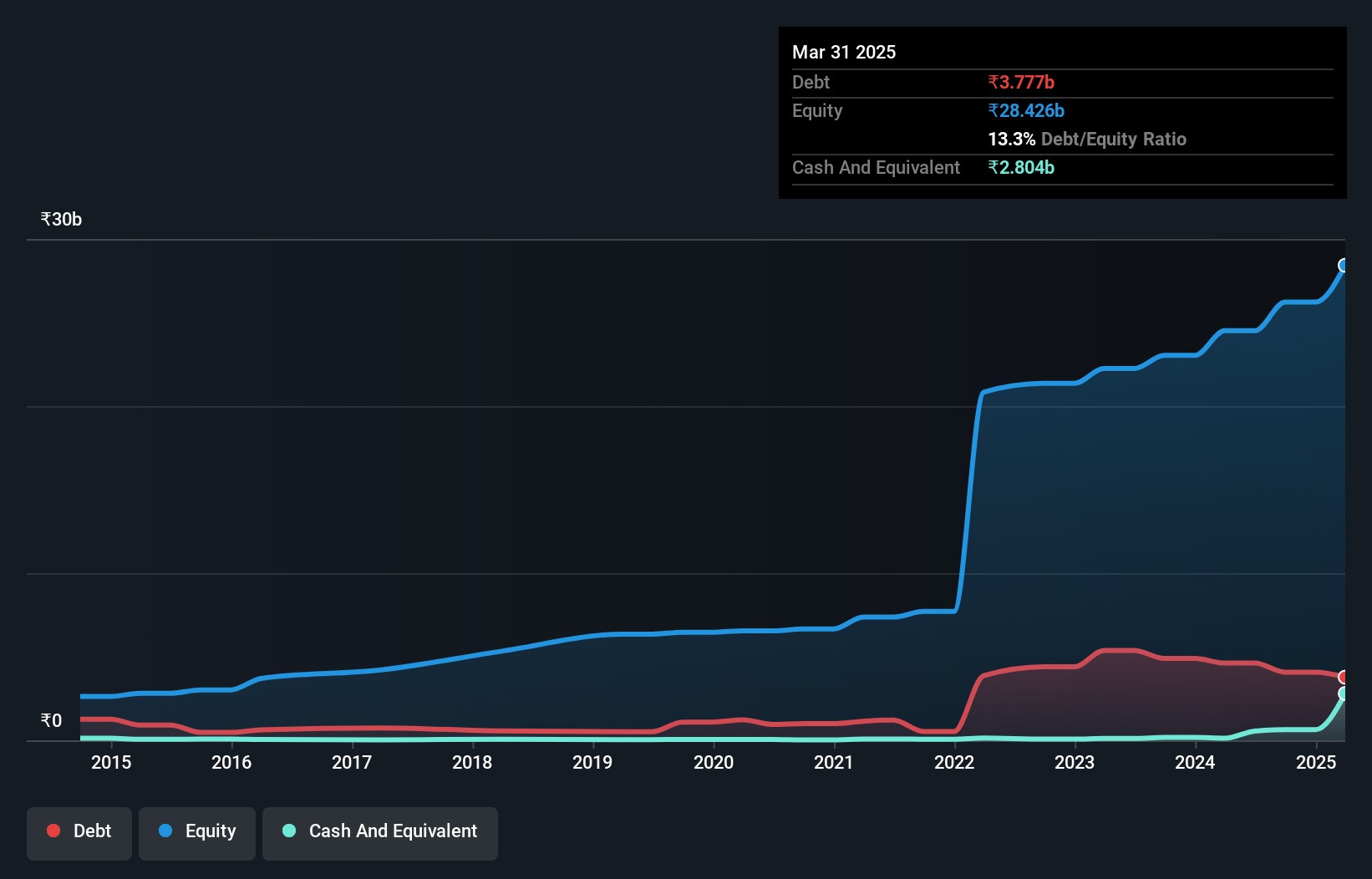- India
- /
- Metals and Mining
- /
- NSEI:GALLANTT
Here's Why Gallantt Ispat (NSE:GALLANTT) Can Manage Its Debt Responsibly
Some say volatility, rather than debt, is the best way to think about risk as an investor, but Warren Buffett famously said that 'Volatility is far from synonymous with risk.' So it seems the smart money knows that debt - which is usually involved in bankruptcies - is a very important factor, when you assess how risky a company is. As with many other companies Gallantt Ispat Limited (NSE:GALLANTT) makes use of debt. But the real question is whether this debt is making the company risky.
Why Does Debt Bring Risk?
Debt assists a business until the business has trouble paying it off, either with new capital or with free cash flow. Part and parcel of capitalism is the process of 'creative destruction' where failed businesses are mercilessly liquidated by their bankers. However, a more usual (but still expensive) situation is where a company must dilute shareholders at a cheap share price simply to get debt under control. Having said that, the most common situation is where a company manages its debt reasonably well - and to its own advantage. When we examine debt levels, we first consider both cash and debt levels, together.
What Is Gallantt Ispat's Net Debt?
You can click the graphic below for the historical numbers, but it shows that Gallantt Ispat had ₹3.78b of debt in March 2025, down from ₹4.62b, one year before. On the flip side, it has ₹2.80b in cash leading to net debt of about ₹972.6m.

How Strong Is Gallantt Ispat's Balance Sheet?
According to the last reported balance sheet, Gallantt Ispat had liabilities of ₹4.11b due within 12 months, and liabilities of ₹2.95b due beyond 12 months. Offsetting this, it had ₹2.80b in cash and ₹1.13b in receivables that were due within 12 months. So its liabilities outweigh the sum of its cash and (near-term) receivables by ₹3.13b.
This state of affairs indicates that Gallantt Ispat's balance sheet looks quite solid, as its total liabilities are just about equal to its liquid assets. So it's very unlikely that the ₹184.9b company is short on cash, but still worth keeping an eye on the balance sheet. Carrying virtually no net debt, Gallantt Ispat has a very light debt load indeed.
View our latest analysis for Gallantt Ispat
We use two main ratios to inform us about debt levels relative to earnings. The first is net debt divided by earnings before interest, tax, depreciation, and amortization (EBITDA), while the second is how many times its earnings before interest and tax (EBIT) covers its interest expense (or its interest cover, for short). Thus we consider debt relative to earnings both with and without depreciation and amortization expenses.
Gallantt Ispat's net debt is only 0.13 times its EBITDA. And its EBIT covers its interest expense a whopping 28.8 times over. So you could argue it is no more threatened by its debt than an elephant is by a mouse. Also positive, Gallantt Ispat grew its EBIT by 28% in the last year, and that should make it easier to pay down debt, going forward. There's no doubt that we learn most about debt from the balance sheet. But it is Gallantt Ispat's earnings that will influence how the balance sheet holds up in the future. So when considering debt, it's definitely worth looking at the earnings trend. Click here for an interactive snapshot.
Finally, a company can only pay off debt with cold hard cash, not accounting profits. So it's worth checking how much of that EBIT is backed by free cash flow. Looking at the most recent three years, Gallantt Ispat recorded free cash flow of 30% of its EBIT, which is weaker than we'd expect. That weak cash conversion makes it more difficult to handle indebtedness.
Our View
Happily, Gallantt Ispat's impressive interest cover implies it has the upper hand on its debt. But, on a more sombre note, we are a little concerned by its conversion of EBIT to free cash flow. Zooming out, Gallantt Ispat seems to use debt quite reasonably; and that gets the nod from us. After all, sensible leverage can boost returns on equity. The balance sheet is clearly the area to focus on when you are analysing debt. However, not all investment risk resides within the balance sheet - far from it. For instance, we've identified 1 warning sign for Gallantt Ispat that you should be aware of.
If, after all that, you're more interested in a fast growing company with a rock-solid balance sheet, then check out our list of net cash growth stocks without delay.
New: Manage All Your Stock Portfolios in One Place
We've created the ultimate portfolio companion for stock investors, and it's free.
• Connect an unlimited number of Portfolios and see your total in one currency
• Be alerted to new Warning Signs or Risks via email or mobile
• Track the Fair Value of your stocks
Have feedback on this article? Concerned about the content? Get in touch with us directly. Alternatively, email editorial-team (at) simplywallst.com.
This article by Simply Wall St is general in nature. We provide commentary based on historical data and analyst forecasts only using an unbiased methodology and our articles are not intended to be financial advice. It does not constitute a recommendation to buy or sell any stock, and does not take account of your objectives, or your financial situation. We aim to bring you long-term focused analysis driven by fundamental data. Note that our analysis may not factor in the latest price-sensitive company announcements or qualitative material. Simply Wall St has no position in any stocks mentioned.
About NSEI:GALLANTT
Gallantt Ispat
Engages in manufacture and sale of iron and steel products in India.
Flawless balance sheet with solid track record.
Similar Companies
Market Insights
Community Narratives



